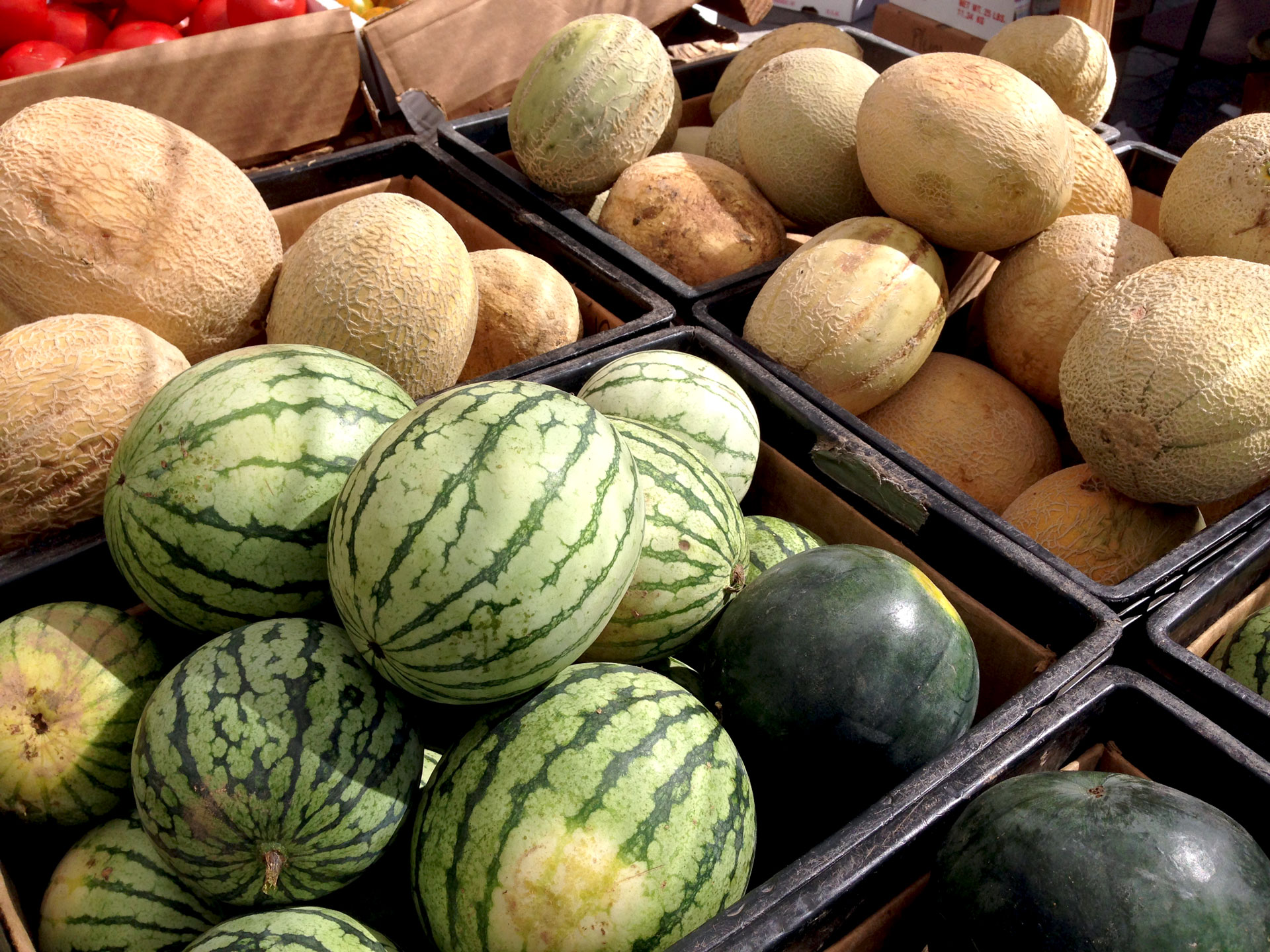Real Food Encyclopedia | Watermelon
When summer cedes to fall, we can get a little blue. But one way to keep the summer feeling alive is to stay present, particularly with produce. And if there’s one crop that epitomizes the sultry essence of summer, it’s the watermelon. As apples and winter squash make their pre-autumn debut, Mother Nature stops the rush hour traffic and allows the last bit of sun-kissed, lycopene-rich chunks of summer to continue. Seasonal melancholy begone; there’s melon to thwack and slurp on, and those last golden days of summer to savor.
Fun Facts about Watermelon:
- Who knew watermelon seed spitting would inspire world records? The longest distance a seed has traveled is 68 feet, nine and 1/8 inches, a Guinness World Record set in 1989.
- Oklahoma loves the watermelon so much it decided in 2007 to recognized it as the official state vegetable, which is a little odd, given that it’s a fruit (although related to vine vegetables such as cucumber and squash).
What to Look for When Buying Watermelon
Pick it up. It should be heavy. Knock on it like the front door. Do you hear a THWUMP? That means it’s ripe.
The underside (aka “soil side”) should be slightly yellowish, too. It means the fruit has been spending time in the dirt getting ripe. And the exterior should be hard to the touch, never soft or squishy.
Watermelon flesh comes in a variety of colors — from the familiar red and pink to yellow, green and even white. And of course, with seeds, or without.
Sustainability of Watermelon
According to the Environmental Working Group’s Shopper’s Guide to Pesticides in Produce, watermelon clocks in at number 32 on the list, meaning that its pesticide load can be relatively high. Watermelon has also had its share of food safety scares, including a salmonella (a past outbreak in Europe was linked to sliced watermelon imported from Brazil). It is both highly dependent on honeybee pollination and drought resistant.
Watermelon Seasonality
Watermelon is a fruit of summer, peaking from July (depending on where you live) to September. Its great reach across the country makes the watermelon a local foodshed darling, giving us little reason to consider jet-fueled melons from the southern hemisphere.
Watermelon and Geography
Watermelon is one of the most widely cultivated crops in the world, with China leading the charge for more than two decades. The US ranks fourth in production, despite being grown in 44 states.
It’s widely believed that the watermelon first came on the scene in the savannahs of southern Africa — possibly in Namibia — where it was foraged by the Khoi and San tribes of the Kalahari. It was first cultivated around 2000 BCE in ancient Egypt, where it appears on wall paintings and the seeds and leaves were placed in tombs.
Through trade routes, it made its way to India, China and Europe, first by the Moors in the 10th century. It came to the New World via the transatlantic slave trade, with the first known colonial cultivation in Massachusetts in 1629. Along with okra and black-eyed peas, the watermelon is inextricably linked to the African American story and its central role in African foodways. As African culinary scholar Jessica Harris writes in High on the Hog, the watermelon was used as a symbol to stereotype African Americans: “some of the most virulently racist images of African Americans produced in the post-Civil War era involve African Americans and the fruit.”
Eating Watermelon
Storing Watermelon
A whole, uncut watermelon can be stored at room temperature. Before cutting, wash the exterior well, and make sure to thoroughly clean your cutting surface. Once cut open, store the fruit in the refrigerator. The larger the pieces, the longer it will keep.
Cooking with Watermelon
What can’t you do with watermelon? The flesh can be cut into cubes and skewered, shaped into balls for salad and cut into any cookie cutter shape. The rind may be pickled or candied, the seeds roasted and ground. Puree it for juice, cocktails, a twist on gazpacho or an icy granita.
As a savory playmate, watermelon loves feta cheese, red onions and bitter greens like arugula. For a yin yang adventure, sprinkle it with cayenne, sea salt and a squeeze of lime.
Watermelon Nutrition
The watermelon is aptly named, at 92 percent water — and not surprisingly, has a long legacy as a thirst quencher, even for livestock. One cup of watermelon flesh is just 46 calories, yet it is a good source of Vitamins A, B and C, as well as potassium and magnesium. But the most compelling reason to slurp on watermelon is its bevy of disease-fighting antioxidants (namely beta carotene and lycopene), found in its pigmented flesh. In fact, the watermelon beats out the tomato in the superpower lycopene contest.
Watermelon seeds are not only edible; they’re a rich source of protein and fat (8 grams and 13 grams for one ounce, respectively), as well as iron and zinc, and are commonly eaten in China and parts of Africa. The seeds are dried and ground into flour in parts of India.


